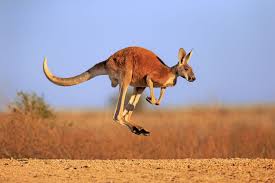Is a Kangaroo a Mammal, Marsupial, or Rodent? Explaining the Differences
Kangaroos are iconic symbols of Australia, hopping gracefully across the Outback with their distinctive silhouette against the horizon.
But beyond their unique appearance, there’s often confusion about what exactly a kangaroo is.
kangaroos are undeniably mammals and, more specifically, marsupials – a unique group of mammals distinguished by their reproductive strategy. While they may share superficial similarities with rodents, kangaroos are categorically different, both in terms of their evolutionary lineage and biological characteristics.
By clarifying these distinctions, we gain a deeper understanding of the rich diversity of life on Earth and the remarkable adaptations that define each species.
Understanding the Basics
First things first, let’s clarify some fundamental concepts. All kangaroos belong to the animal kingdom, phylum Chordata, class Mammalia. So yes, kangaroos are indeed mammals. But what sets them apart from other mammals, like cats or dogs?
Animal Kingdom (Animalia): This is the highest level of classification, encompassing all multicellular organisms that lack cell walls and obtain nutrients through ingestion. Kangaroos, along with cats, dogs, humans, and an immense array of other species, fall under this kingdom.
Phylum Chordata: Within the Animal Kingdom, kangaroos are classified under the phylum Chordata. This phylum includes animals with a notochord – a flexible rod-like structure that runs along the length of the body at some stage in their development.
Chordates also typically possess a hollow nerve cord, pharyngeal slits, and a tail. Kangaroos, with their vertebrate structure and other chordate characteristics, fit squarely within this phylum.
Class Mammalia: Now, here’s where things get interesting. Kangaroos, along with cats, dogs, humans, and countless other species, belong to the class Mammalia. This class is characterized by several key features:
- Mammary Glands: All mammals possess mammary glands, specialized structures that produce milk to nourish their offspring. Kangaroos, like other mammals, rely on milk to feed their young, demonstrating their mammalian status.
- Hair or Fur: Mammals are also distinguished by the presence of hair or fur, which helps regulate body temperature and provides protection from the elements. Kangaroos sport fur coats, which vary in color and texture depending on the species and environment.
- Warm-Blooded: Unlike reptiles and amphibians, which rely on external sources of heat to regulate their body temperature, mammals are warm-blooded, meaning they can maintain a relatively constant internal temperature regardless of external conditions. This metabolic adaptation allows kangaroos to thrive in diverse environments, from the arid Outback to temperate forests.
Mammal, Marsupial, or Rodent: What’s the Difference?
Here’s where it gets interesting. While all kangaroos are mammals, not all mammals are kangaroos. Similarly, kangaroos are marsupials, but not all marsupials are kangaroos. Confused? Let’s break it down.

Mammals: The Basics
Mammals are a diverse group of animals characterized by several key features. They have hair or fur, give birth to live young (with a few exceptions), and nurse their offspring with milk produced by mammary glands. Kangaroos check all these boxes, making them unquestionably mammals.
Marsupials: Uniquely Australian
Now, let’s zoom in on marsupials. This distinctive group includes animals like kangaroos, wallabies, and koalas. What sets marsupials apart from other mammals is their reproductive system.
Marsupials give birth to relatively undeveloped young, which then continue to develop and nurse in a pouch. Yes, that’s right – kangaroos have pouches! These pouches, located on the mother’s abdomen, provide a cozy environment for joeys to grow and develop.
marsupials like kangaroos exemplify the incredible diversity of life on Earth, with their unique reproductive adaptations and specialized parenting strategies.
From the cozy confines of the pouch to the nurturing care provided by devoted mothers, marsupials offer a glimpse into the wonders of nature and the marvels of evolution.
Rodents: Not Even Close
Now, what about rodents? Despite their popularity in cartoons and pet stores, kangaroos are not rodents. Rodents belong to the order Rodentia and are characterized by their continuously growing incisors.
Think mice, rats, and squirrels. Kangaroos, with their hopping locomotion and marsupial reproductive system, are a world apart from these small, gnawing creatures.
Why It Matters
Understanding the classification of kangaroos isn’t just about satisfying curiosity – it’s essential for appreciating the diversity of life on Earth. By learning about the unique characteristics of kangaroos, we gain a deeper understanding of the natural world and our place in it.
Diversity of Life:
Life on Earth is incredibly diverse, with millions of species inhabiting various ecosystems across the globe. From microscopic bacteria to towering redwoods, each organism plays a unique role in the intricate web of life. Kangaroos, with their distinctive traits and behaviors, represent just one thread in this vast tapestry of biodiversity.
Interconnectedness:
The classification of kangaroos reminds us of the interconnectedness of all living things. Each species, no matter how small or seemingly insignificant, contributes to the functioning of ecosystems and the health of the planet.
By understanding the relationships between different organisms, we gain insight into the complex dynamics that sustain life on Earth.
Ecological Relationships:
Kangaroos, as herbivores, interact with their environment in profound ways. Their feeding habits influence plant communities, nutrient cycling, and the distribution of resources. By studying kangaroos and their ecological relationships, we gain a deeper understanding of ecosystem dynamics and the delicate balance that sustains life.
The Incredible Kangaroo: Nature’s Marvel
Kangaroos are more than just fascinating creatures – they’re ecological marvels. As herbivores, they play a crucial role in shaping their environment by grazing on grasses and shrubs. Their distinctive hopping gait allows them to cover vast distances efficiently, making them perfectly adapted to the Australian landscape.
In conclusion, kangaroos are more than just iconic symbols of Australia; they are ecological marvels with a profound impact on the landscapes they inhabit.
By understanding and appreciating their ecological significance, we can work towards conserving these unique animals and the ecosystems they support.
From grazing dynamics to seed dispersal to ecosystem engineering, kangaroos play a multifaceted role in highlighting the interconnectedness of all living things.

Protecting Kangaroos for Future Generations
Despite their adaptability, kangaroos face numerous threats, including habitat loss, climate change, and human activity. As stewards of the planet, it’s our responsibility to protect these iconic animals and the habitats they depend on.
By supporting conservation efforts and advocating for sustainable practices, we can ensure that kangaroos thrive for generations to come. Together, we have the power to make a difference and safeguard the future of these iconic Australian animals.
Conclusion
In conclusion, kangaroos are indeed mammals, but they’re also marsupials – a unique group of animals found primarily in Australia. While they may share some similarities with rodents, kangaroos are in a class of their own, with distinctive adaptations that make them perfectly suited to their environment.
By understanding and appreciating the differences between mammals, marsupials, and rodents, we gain a deeper appreciation for the incredible diversity of life on Earth.
FREQUENTLY ASKED QUESTIONS
Are kangaroos rodents?
No, kangaroos are not rodents. While they may share some superficial similarities, such as their hopping locomotion, kangaroos belong to the marsupial family, not the rodent family.
Do kangaroos lay eggs?
No, kangaroos give birth to live young. However, their reproductive process is unique among mammals, with relatively undeveloped joeys continuing to develop in the mother’s pouch after birth.
Can kangaroos be kept as pets?
In most places, it is illegal to keep kangaroos as pets. Additionally, kangaroos have complex social and environmental needs that are difficult to meet in a domestic setting.
How fast can kangaroos hop?
Kangaroos are incredibly fast and can hop at speeds of up to 40 miles per hour (64 kilometers per hour) over short distances.
Are all kangaroos the same species?
No, there are several species of kangaroos, including the red kangaroo, eastern grey kangaroo, and western grey kangaroo, among others.
kangaroos only live in Australia?
While kangaroos are most commonly associated with Australia, they can also be found in Papua New Guinea and nearby islands.
Are kangaroos endangered?
While some species of kangaroos are considered vulnerable or near-threatened, others are abundant and not currently at risk of extinction. However, habitat loss and human activity pose significant threats to kangaroo populations.
References:
- Australian Museum. “Kangaroos: The World’s Largest Marsupials.” Accessed [insert date]. [Link]
- National Geographic. “Kangaroos.” Accessed [insert date]. [Link]





